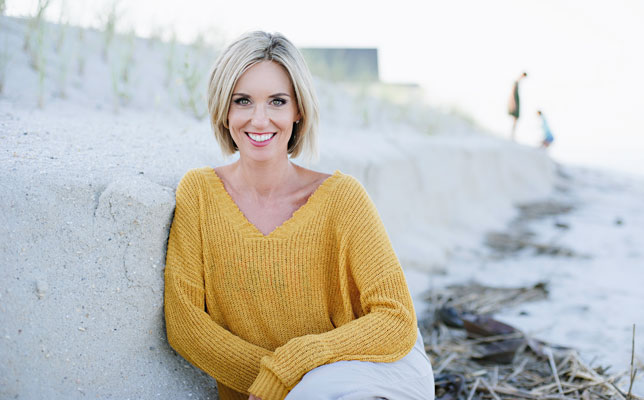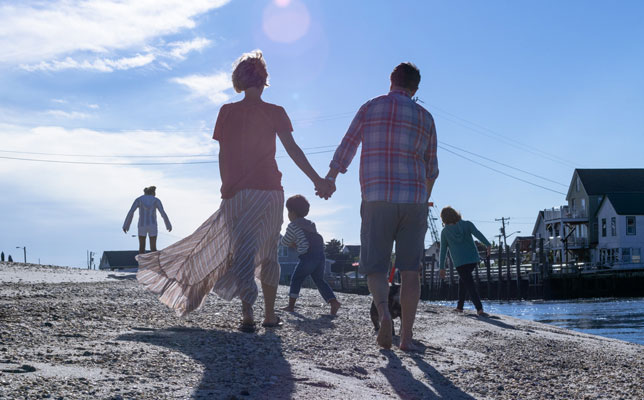This guest post is by Kerstin Lindquist, an adoptive mother and author.
“Mom you have to write this in your next book!” My middle child squeals in delight as I reveal the latest developments. She can’t get enough of the real-life drama that is our family.
“This is more of a made for TV movie sweetie.” I laugh.
Rewind to a year ago to a simple DNA kit. As a family created through adoption—two of our three kids are adopted as well as my brother, cousin and sister in law—my desire in getting tested was not so much to find any of my long-lost relatives but to discover a common strain between me and my kids.

My first daughter has had a hard time with not looking like us as she’s gotten older. Her dark hair and petite frame contrast with our pale skin and long legs.
Genetics has become a hurdle when it comes to feeling our unconditional love. So I went to our DNA in search of commonality, and I found it.
“I’m three percent Irish too mama!?” She shyly exclaimed. The long list of ethnicity estimates all intersecting by a small percentage in some European countries.
When our results came in, I expected to see some potential matches with her birth relatives, and even secretly hoped to find answers about our toddlers’ birth father who we were never able to find when he was born.
What I didn’t expect to discover was an uncle, multiple cousins, and two potential aunts on my side. These blood relatives all resulting from secret adoptions in my not too distant family tree.
The first uncle found me last year through Ancestry. He’s my mother’s half-brother, placed before my mom was born.
Then this year a cousin who didn’t find out she was adopted until she was forty, reached out through our common match in the search for her birth mother who would be my mother’s sister, a child none of us ever knew about.
There is a family memory of a baby who died at birth, possibly a product of an affair. However, now it appears that was a full sibling placed for adoption at the hospital. As the strains of DNA unravel decades of lies and affairs and secrets are uncovered.

In all it appears my grandmother may have placed three children in addition to the three others she kept, my mother included. From what we have found, she never told anyone about these adoptions and may have even held these secrets from the birth fathers. My new dear uncle was given away to a “father” that DNA now shows was not biologically a match.
My grandmother passed years ago, my mother has Alzheimer’s and the two uncles I grew up with would have been too young to remember their mother pregnant, so there is no one to ask what really happened.
Back in those days birth certificates could be very creative. And when a child is placed for adoption then that child places a baby, the family tree becomes a briars nest.
As the story unfolds through genetic make-up and ancient microfiche, each discovery leaves me more speechless then the next. There is a “Search Angel” helping one of these adopted cousins—a brilliant and generous woman who is aiding in the search for my cousin’s birth mom, my aunt.
As the DNA delivers new blood relatives, my concern is not for myself and what this means for the false family tree I grew up believing, but for this cousin who is still waiting for answers. How my heart hurts to see a child, no matter what age, yearning to find a biological parent.
I don’t think it’s a mistake that this tangled web is unfolding in my life. Having adopted twice myself, I have a heart for adoptees. I know if and when my son and daughter want to find their birth parents, I will be available with any answers I have and give unconditional, honest support along the way.
We’ve learned so much about the mind of an adopted child in the last fifty years. Many need to have closure and mourn the family they never had. I want that for my kids.
While what happened in my family tree was likely a result of shame and fear and infidelity those words don’t belong associated with adoption.
Adoption itself is beautiful. Each of these adopted children are valued. Adoption needs to be a word that is not whispered in the dark but declared in the light.
I am not ashamed of what happened long ago in my family, only sad that we don’t have a clear record so these new aunts and cousins can get the closure they need.

“Did great grammy ever tell anyone about her babies?” My daughter wonders out loud.
“I don’t know kiddo. Probably not.” I respond.
“Maybe she was sad like Ben’s birth mom was?”
“I’m sure but remember what a beautiful thing his birth mom did loving him enough to give him to us. Great grammy too. She made the right decision at the time.”
How heartbreaking to think that my grandmother never had the chance to see what a gift she gave. She was still alive when I adopted my first child.
I wonder if she wanted to tell me what had happened to her babies. I wish she would have. There is such healing in sharing your story. I would have hugged her tightly and praised her for her decision and possibly relieved some of the guilt she may have held on to for all those years.
This new world of DNA has changed the landscape for adoptees in a very positive way. But it’s also demolishing the history so many of us grew up believing.
We have to be careful what we ask for when we spit into a tube. My prayer is that with every shocking revelation we can look back and see how far adoption has come.
That way we can build on the progress we have made in adoption. From secrets and lies to the beauty of saving a life and building a family through love.
Kerstin Lindquist is a mom of three and author of multiple faith-based books including; Where’s My Crown for Acting Like Everything is Fine? A Guide to Royally Surviving Life’s Waiting Periods. She is an award-winning broadcast news journalist and host at QVC. Kerstin and her family live on a sunny hill in eastern Pennsylvania. She wears a tiara at home to stay sane. They spend their free time in warm climates – preferably with sand.
Do you have an open adoption story? Email us any time or find out more about how to share it with our community.
